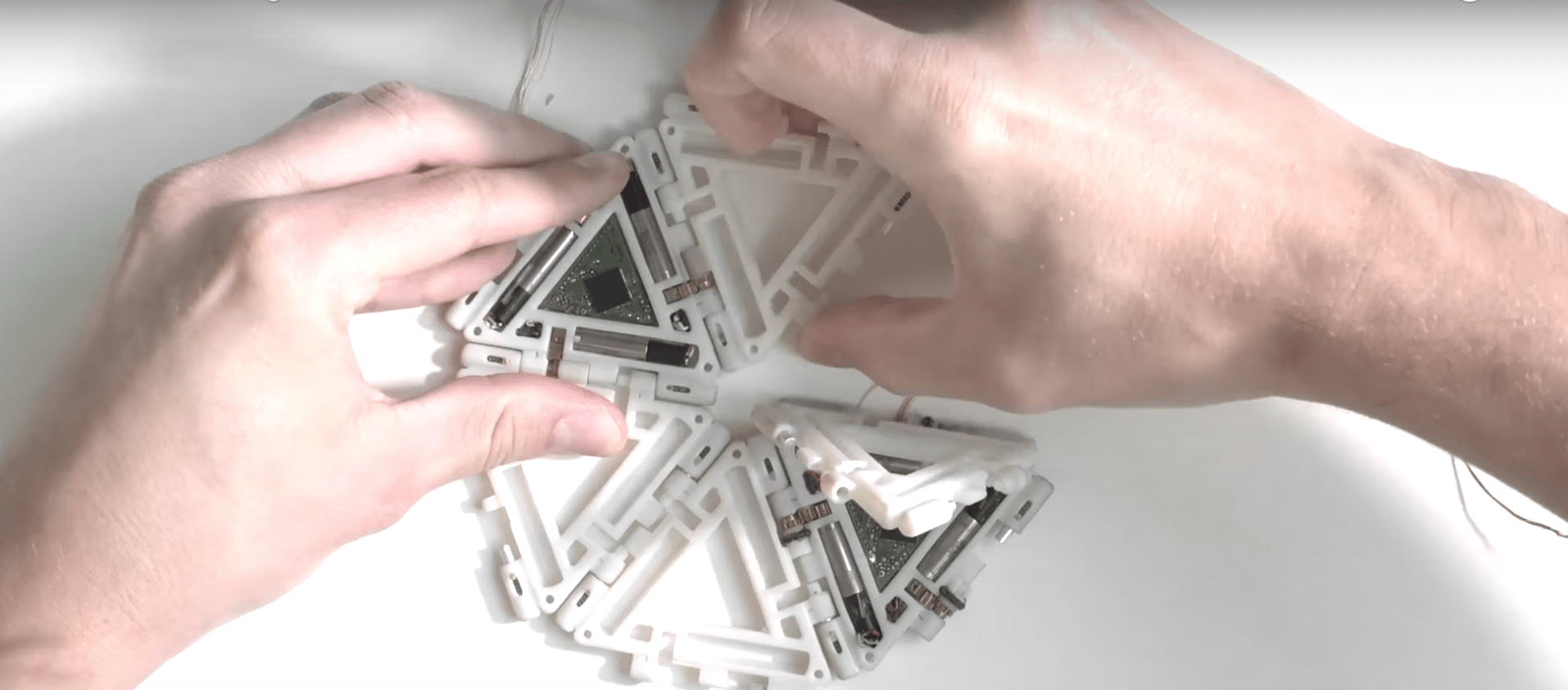There are many different types of robotics today. Some people prefer the larger robots capable of fighting against one another, whereas scientists are making robotics as small as possible. There is now a modular origami robot as well, which shows that the possibilities are virtually endless. Mori, as this modular origami robot is known, will serve some rather unique purposes.
Why Would Anyone Need an Origami Robot?
The worlds of modular and origami robots have started to gain traction in recent years. Most people would assume there is little purpose to a modular robot shaped like an origami figure, but the reality is very different. The Mori robot shows how reconfigurable modular robotics can be quite powerful. The origami aspect refers to how these machines utilize folding of thin structures to provide shape-shifting robots.
A modular robot requires multiple entities to change its shape. Fans of the Power Rangers series will remember how multiple small robots came together to form the Megazord thanks to their modular structures. Modular robots have a leg up over origami robots, as they are not restricted based on the size and shape of their sheet and the number of folds one can achieve. Combining these two different types of robots into one product yields some surprising results.
Mori provides the best of both worlds and gets rid of most of the drawbacks each individual type of robot presents. For example, it looks like a regular origami robot in size, but it is still as flexible as your average modular robot. Thanks to its coupling mechanism with a rotating pivot, modules can be attached to one another in many different formations. Every connected module can then fold into the desired shape.
Mori weighs just 26 grams, and it is by far one of the lightest robotics we have seen to date. This weight includes its onboard sensors, controller, and actuators. Once it is connected to a power source, the user can make use of all its functionalities immediately. Although this is just a prototype for now, the team behind Mori feels their product will raise the bar in the world of robotics moving forward.
A prototype has to be thoroughly tested before it is presented to the world. The team conducted three different tests, all of which were successful. Mori can be used as a robot to assemble itself into a reconfigurable surface which changes shape based on user input. It can also enter small gaps and assemble on the other side without any issues. Last but not least, Mori can manipulate objects with closed-loop control when coupled with feedback provided by an external camera. All three tests were incredibly easy to achieve, indicating that this origami modular robot can serve many different purposes.
It is evident that the world of robotics is undergoing exciting changes as we speak. Mori is the first robotic to create reconfigurable surfaces of any size in three dimensions. Moreover, it can certainly serve its purpose as a repair tool to access regions or systems inaccessible by humans. One example mentioned by the team is how the Mori can repair damage to a structure floating in space. Indeed, it does not appear there is any limit as to what this robot can do. All things considered, this is a very exciting development in the robotics industry.

